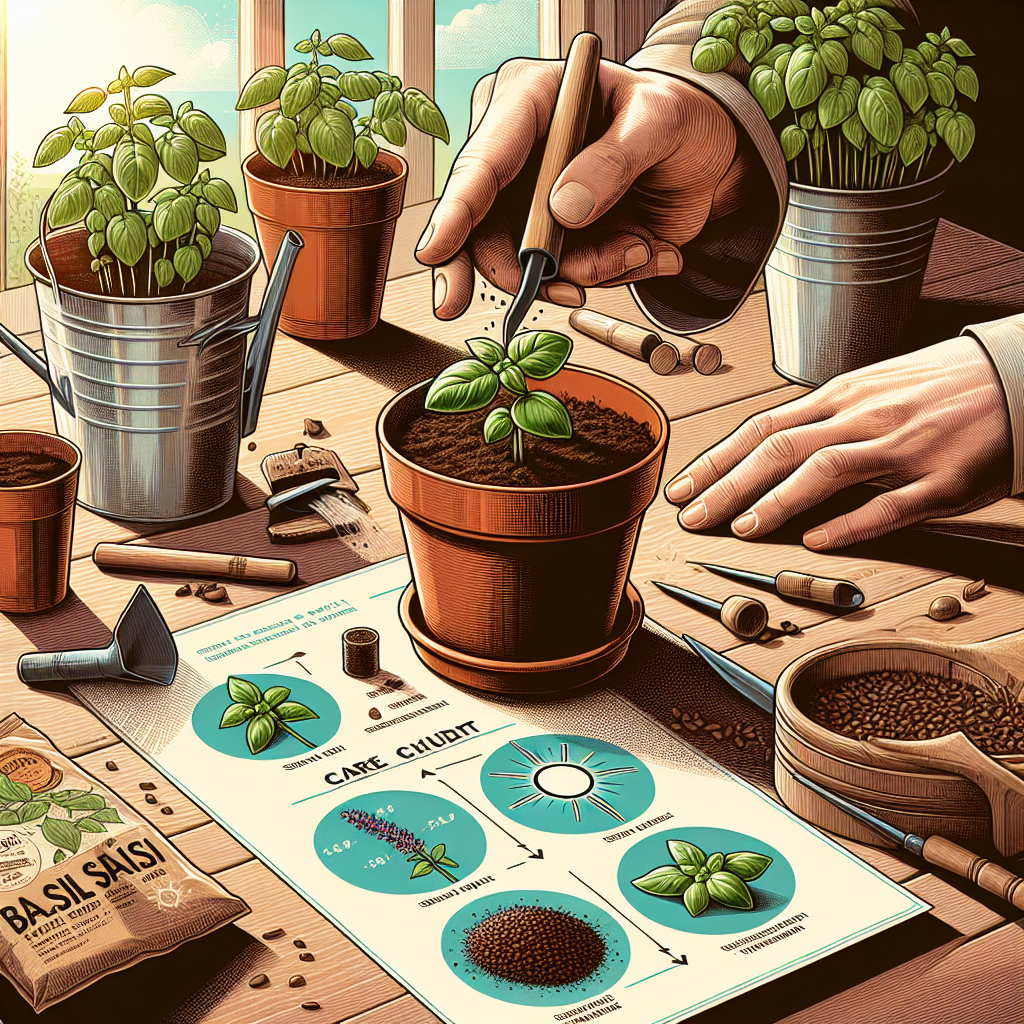
How to grow basil at home
How to Grow Basil at Home: A Comprehensive Guide
Basil is one of the most beloved herbs in culinary arts, renowned for its aromatic appeal and versatility in cooking. Growing basil at home not only allows you to have fresh supplies at your fingertips but also elevates your cooking experience. In this guide, we will break down the essential steps, tips, and considerations to successfully cultivate this fragrant herb.
Why Grow Basil?
Growing basil offers numerous benefits, including:
- Fresh Supply: Having your own basil ensures that you can add fresh flavors to your dishes whenever needed.
- Cost-Effective: Growing basil at home can save you money compared to purchasing fresh herbs from the store.
- Health Benefits: Basil has numerous health benefits, including anti-inflammatory properties and antioxidants.
- Gardening Enjoyment: Cultivating your own plants can be therapeutic and rewarding.
Ideal Conditions for Basil Growth
Before you start your basil garden, let's explore the ideal conditions for growing basil effectively:
- Light: Basil thrives in full sunlight. Ideally, it requires 6 to 8 hours of direct sunlight each day. A south-facing window is perfect for indoor growth.
- Temperature: The optimal temperature range for basil is between 70°F and 85°F (21°C - 29°C). Avoid temperatures below 50°F (10°C).
- Soil: Well-draining soil that is rich in organic matter is essential. A pH level of 6 to 7 is ideal for basil.
- Watering: Basil prefers consistent moisture but dislikes soggy soil. Water when the top inch of soil feels dry.
Choosing the Right Basil Variety
There are several basil varieties to choose from, each possessing unique flavors and characteristics. Some popular ones include:
- Sweet Basil: The most common basil variety used in cooking.
- Lemon Basil: Offers a citrus flavor, perfect for salads and fish dishes.
- Thai Basil: Known for its distinct aroma and a hint of anise, used in Asian cuisines.
- Purple Basil: Adds a splash of color to your dishes and has a slightly different taste.
Starting Basil from Seeds
If you're wondering how to grow basil at home, starting from seeds is a fantastic option. Here’s a step-by-step guide:
- Gather Supplies: You'll need basil seeds, seedling trays or pots, potting soil, and a light source.
- Prep the Soil: Fill your trays or pots with a high-quality potting mix, leaving about half an inch from the top.
- Sow Seeds: Plant seeds about 1/4 inch deep, ensuring they are spaced at least an inch apart.
- Water Carefully: Use a spray bottle to moisten the soil without over-watering.
- Provide Warmth and Light: Keep the trays in a warm location. Once seeds germinate, provide ample light.
- Thinning Out Seedlings: Once plants grow to a few inches, thin them out so that the remaining plants are spaced about 6-10 inches apart.
Transplanting to Outdoor or Indoor Pots
When your basil plants are about 4-6 inches tall and have several sets of true leaves, they are ready to be transplanted. Follow these steps:
- Choose a Location: Select a sunny spot for outdoor basil or a well-lit area indoors.
- Prepare the Soil: Amend the soil with compost to provide nutrients. Make sure it drains well.
- Transplant: Carefully remove the seedlings from their trays and plant them in the ground or individual pots, ensuring the roots are well spaced.
- Water Thoroughly: After transplantation, water the plants deeply to encourage root establishment.
Care Tips for Healthy Basil Plants
Now that your basil is planted, it's important to maintain its health. Here are some tips:
- Watering: Water consistently, especially in dry periods, but avoid over-watering.
- Fertilization: Use a balanced fertilizer every few weeks to promote growth.
- Pruning: Regularly pinch back the tips to encourage bushier growth. Remove any flowers that appear to prevent the leaves from becoming bitter.
- Pest Management: Keep an eye out for pests such as aphids and spider mites. Neem oil can be effective for treatment.
Harvesting Basil
When your basil plants reach a height of about 6 inches or more, they're ready to be harvested. Here’s how to do it properly:
- Timing: The best time to harvest is in the morning after the dew evaporates for maximum flavor.
- Method: Use scissors to cut stems right above a leaf pair, encouraging new growth.
- Avoid Over-Harvesting: Only take about 1/3 of the plant at a time to ensure it continues producing.
Storing Basil
Once harvested, keeping your basil fresh and flavorful is essential. Here are some storage methods:
- Refrigeration: Store fresh basil in a damp paper towel within a plastic bag in the fridge.
- Freezing: Chop basil and mix it with olive oil. Pour into an ice cube tray and freeze for future use.
- Drying: Hang bunches upside down in a cool, dark place to dry. Store the dried leaves in an airtight container.
Common Challenges in Growing Basil
While basil is relatively easy to grow, some common challenges can arise:
- Pest Infestations: Keep an eye out for pests and treat them promptly.
- Wilting Leaves: This may indicate either over-watering or under-watering; check soil moisture to diagnose the issue.
- Powdery Mildew: Promote good air circulation and avoid overhead watering to prevent this fungal issue.
Conclusion
Growing basil at home is a fulfilling endeavor that allows you to enjoy the fresh flavors of this beloved herb year-round. Whether you choose to start from seeds or cuttings, by providing adequate care, the right conditions, and regular harvesting, your basil plants will thrive and enhance your culinary creations. With a little time and patience, you’ll soon find yourself with an abundant supply of this aromatic herb.
“Herbs are the most delightful part of the garden, adding flavor and fragrance to our cuisine.” – Unknown
Happy gardening, and may your homegrown basil bring joy to your kitchen for many meals to come!
By Guest, Published on September 24th, 2024